
Words: The Railway Magazine
Britain’s train fleet is undergoing its biggest transformation since the 1950s, with around 5,700 new vehicles being delivered or on order.
Ben Jones looks at what we’ll be seeing on the rails over the next few years and how it will affect existing trains.
If you keep an eye on the railway press, the large number of orders for new trains in recent years won’t have escaped your attention. The launch of fleets such as Hitachi’s InterCity Express Trains (IETs) will no doubt have alerted you to the dawn of a new generation.
More and more passengers are using Britain’s railways, either to commute into our big cities or for leisure travel, and complaints about overcrowding and outdated trains have been on the rise. Couple that with a generation of ex-British Rail trains coming to the end of their working lives and the requirement for new and additional trains is clear.
By 2021, more than 7,000 new vehicles will have been added to the fleets of train operators across the country. Many will replace older trains such as the Class 142-144 ‘Pacers’ and iconic InterCity 125s, as well as a whole raft of ex-BR Electric Multiple Units (EMUs), while others will add much-needed extra capacity.
According to the Rail Delivery Group (RDG), the new vehicles “represent an investment of at least £13.8billion by the private sector in rail” and will enable “more than 6,400 extra services each week by 2021, benefiting all parts of the country”.
InterCity Express
The most high-profile, and largest, of the new train orders is the Government’s £5.7billion InterCity Express Programme (IEP). In summer 2012, the Department for Transport (DfT) agreed a deal with Hitachi Rail Europe for IC125 replacement trains, totalling 122 sets (866 vehicles), to replace current stock with Great Western Railway (57 sets) and Virgin Trains East Coast (65 sets).
The GWR fleet is being gradually filtered into passenger service after extensive type testing, and is a mix of Class 800 bi-mode five-car (36 sets) and 21 nine-car trains with 25kV AC overhead electric equipment and underfloor diesel engines.
Virgin Trains East Coast will have 10 five-car and 13 nine-car bi-modes plus 12 five-car and 30 nine-car 25kV AC Class 801 electric-only sets. They will be branded as ‘Azumas’ for East Coast Main Line services from King’s Cross to Yorkshire, the North East and Scotland. Even the ECML electric sets will feature a single diesel engine, allowing them to be shunted ‘off the wires’ or run at low speed to the nearest station if there’s a problem with the electric supply or route.
VTEC expects its first ‘Azumas’ to make their passenger debut in November.
On top of the IEP fleet, GWR has ordered a further 36 Class 802 bi-mode trains (22 five-car and 14 nine-car) with more powerful engines and larger fuel tanks for West of England routes. Designated AT300 by Hitachi, this design has also been chosen by TransPennine Express as its new 125mph flagship, with 19 sets due to start work in December 2019 and Hull Trains, which is to receive five sets in 2018/19.
The first two TPE Class 802/2s are now under construction in Japan and due to arrive in the UK in the summer for testing. The remaining 17 trains will be completed at Newton Aycliffe and in Pistoia, Italy.
In total, Hitachi will build 1,285 Class 800-802 vehicles at its plants in Japan, Newton Aycliffe, in County Durham, and Pistoia, between 2015 and 2019, and more could be added if the company wins the contract to build new bi-mode trains for the Midland Main Line.
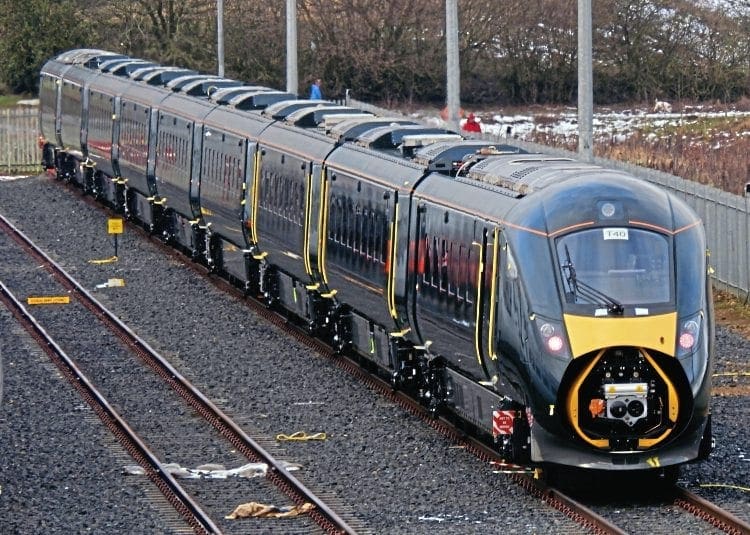
‘People movers’
Another huge new train fleet now entering service is dedicated to the cross-London Thameslink operation, which is set for a major expansion in May 2018. Again backed by the Government, this order for 1,140 EMU vehicles, formed into 60 eight-car and 55 12-car sets (Class 700/0 and 700/1, respectively), was controversially awarded to Siemens in 2013.
The trains are built at the company’s Krefeld plant in Germany before being tested and delivered by rail via the Channel Tunnel to the UK. The ‘700s’ entered service in 2016 and have now completely replaced the previous Class 319 and 377 EMUs used on Thameslink routes.
From December 2019, when the £6bn programme is complete, up to 24 trains per hour will operate through the central section tunnels between St Pancras and Blackfriars, linking destinations as diverse as Brighton, Cambridge, Bedford, Littlehampton and Maidstone.
The ‘700s’ are designed to move large numbers of people as efficiently as possible and feature wide, fast-acting doors and extensive standing areas to cope with peak time demand.
Siemens has also sold 30 similar five-car Class 707 trains to South West Trains (now South Western Railway) for suburban routes in south-west London and 25 six-car Class 717 sets to Great Northern to replace Class 313s on Moorgate inner-suburban services from 2019.
The ‘707s’ are gradually entering service with SWR, but will be displaced when the new operator’s ‘Aventra’ EMUs arrive in 2019/20 (see later in feature). The first of GN’s Class 717s should arrive in late-2018 and will feature a modified design with cab end emergency doors – mandatory for operation in the Moorgate tunnels.
The expanded Thameslink operation is designed to provide better north-south connections across London, with the £14.8bn new Crossrail route running east to west, linking Shenfield, Abbey Wood and Canary Wharf with Heathrow Airport and the Thames Valley via central London.
New tunnels under the City of London and the West End will be phased into use from December 2018, introducing a high-frequency metro operation using 70 nine-car Class 345 ‘Aventra’ EMUs built by Bombardier in Derby.
The trains are entering service as seven-car sets on the Liverpool Street to Shenfield route and will start testing in the new tunnels in the next few months. Internally, the ‘345s’ are arranged much like London Underground’s sub-surface trains with longitudinal seating and lots of standing space. All will be in use by December 2019.

Bombardier’s ‘Aventra’ design has proved extremely popular with operators and leasing companies, with Greater Anglia, London Overground, South Western Railway, c2c and London Northwestern/West Midlands Railway all placing large orders in recent months.
As part of a complete fleet replacement, GA will receive 665 ‘Aventra’ vehicles formed into 89 five-car and 22 10-car Class 720 EMUs for outer-suburban routes in East Anglia, while London Overground will receive 45 four-car Class 710 EMUs in 2018 to replace Class 315 and 317 EMUs and Class 172 DMUs on inner-suburban routes in north London.
The first ‘710’ was unveiled at Derby in November. Nos. 710101-131 are 25kV AC sets for Liverpool Street inner-suburban lines such as Chingford and Enfield Town, plus Romford to Upminster and Gospel Oak to Barking, while Nos. 710256-269 are dual-voltage 25kV AC/750V DC third-rail for the Euston to Watford Junction ‘DC Lines’ and the North London Line.
A further 750 ‘Aventra’ cars have been ordered by South Western Railway (which ousted South West Trains in August 2017) to replace its Class 455/456/458 750V DC third-rail suburban EMUs from mid-2019.
Following the recent trend for longer EMU sets, the SWR Class 701s will be formed into 30 five-car and 60 10-car sets. Interestingly, they will also replace the 30 Siemens Class 707s, which are still being delivered and only started carrying passengers in September 2017. No new home has yet been found for these expensive new trains.
The most recent orders for ‘Aventras’ were placed by the new London Northwestern/West Midlands Rail franchise in October and Trenitalia’s c2c operation in December.
The West Midlands trains consist of two distinct fleets totalling 333 vehicles – 36 three-car ‘metro’ sets for short-distance commuter lines around Birmingham and 45 five-car outer-suburban EMUs for the Euston route – and will enter service in 2020/21.
They will replace the Class 323 three-car EMUs and Siemens high-density Class 350/2s from 2021, as well as increasing overall capacity by around 25%.
Six 10-car ‘Aventras’ will boost capacity on c2c’s Essex Thameside commuter routes from late-2021. The £100million order will be delivered three years earlier than originally planned, adding 20% more seats. The sets will have more than 900 seats each, equivalent to a 12-car formation of c2c Class 357 ‘Electrostars’.
An interim deal for extra EMU vehicles is also being discussed to provide more capacity between December 2019 and the delivery of the new trains.

Northern Powerhouse
Much of the current investment is focused on London and the south-east of England, but new trains are also set to appear on many routes across the north of England and Scotland.
The most interesting of these from an enthusiast point of view are probably the three new types of train being introduced by TransPennine Express. TPE is aiming to increase comfort to Inter-City standards, accelerate schedules and increase capacity from 2019, and will receive 19 Class 802 bi-mode trains from Hitachi (see page 39) and 12 five-car Class 397 ‘Civity’ 125mph EMUs from Construcciones y Auxiliar de Ferrocarriles (CAF) in Spain.
CAF is also building 13 five-car sets of Mk 5a coaches for TPE, which will run in push-pull formation with Class 68 diesels leased from Direct Rail Services (DRS). The latter will replace Class 185 DMUs on trans-Pennine routes such as Scarborough to Liverpool and Manchester to Middlesbrough from late-2018.
The CAF Mk 5 design forms the basis Caledonian Sleeper’s new Anglo-Scottish overnight trains, due to enter service from October. A total of 75 vehicles of five different types will be formed into four 16-coach trains, to be hauled by Class 92 electrics, and Class 73/9 electro-diesels, hired from GB Railfreight.
The coaches will replace ex-BR Mk 2/Mk 3 stock on routes from Euston to Glasgow/Edinburgh, Aberdeen, Inverness and Fort William.
CAF is one of several European suppliers to challenge the dominance of Bombardier and Siemens in recent years. It has also won orders from Arriva Rail North to build 281 new EMU/DMU cars worth £491m.
The vehicles will be formed into 31 three-car and 12 four-car EMUs for use around Greater Manchester and in West Yorkshire, plus 25 two-car Class 195/0 and 30 three-car ‘195/1’ DMUs to allow the widely disliked ‘Pacer’ railbuses, to be withdrawn in 2018/19.
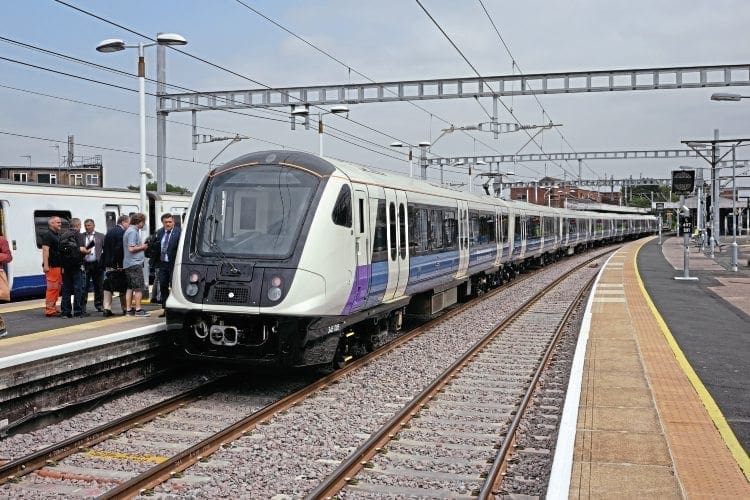
The three-car EMUs will also replace Class 323s in Greater Manchester, while the four-car sets will replace Class 321/322s in West Yorkshire. The first sets are due to arrive in the UK in spring 2018 and enter service in December.
The most recent success for the Spanish train builder is an order for 80 DMU cars for West Midlands Rail, consisting of 12 two-car and 14 four-car trains to enter service around Birmingham from 2020.
A site near Llanwern in South Wales has been identified for CAF’s new British assembly plant. (RM Feb 2018).

New Suppliers
Swiss company Stadler is another recent entrant into the UK train market, winning three orders in 2015/16. Starting with a relatively small, bespoke contract to build new automatic trains for the Glasgow Subway, in late-2016 it joined the big leagues with major orders from Greater Anglia and Merseyrail.
Under construction in Switzerland are the first of 378 ‘FLIRT’ UK vehicles for Greater Anglia (GA) – developed from a family of more than 1,300 ‘FLIRT’ trains now used across Europe and further afield. GA’s £500m fleet will consist of 20 Class 745 12-car inter-city EMUs – 10 for the Norwich line and 10 for Stansted Express and 38 Class 755 bi-mode (diesel/electric) trains for regional services.
The latter will be split into 14 three-car and 24 four-car sets. They are part of GA’s £1.4bn complete fleet replacement in 2018-20 and will directly replace Class 153, 156 and 170/2 DMUs, Class 379 EMUs and Class 90/Mk 3 push-pull sets.
Stadler’s other major UK contract is for a bespoke fleet of 52 articulated metro-style EMUs for Merseyrail. The £460m fleet will replace the ex-BR Class 507/508 EMUs on the Merseyside 750V DC third-rail network from 2020. The first train is scheduled to arrive in Liverpool in summer 2019.
The Swiss company also inherited an order for Class 399 tram-trains when it acquired Vossloh Espana in 2015. The fleet of seven three-section 750V/25kV AC light rail vehicles is due to start work for Stagecoach Supertram between Sheffield and Rotherham Parkgate in September 2018.
Of the seven, four will be configured for tram-train work, while the remaining trio will boost capacity on the Supertram network.
Although Hitachi Rail Europe captured the headlines with its multi-billion pound IEP deal, it is also supplying new AT200 EMUs to ScotRail. No fewer than 70 three-car and four-car Class 385 trains are being built in Japan and at Newton Aycliffe.
Now testing in Scotland, they will make a belated debut on the Edinburgh to Glasgow via Falkirk High route in May. The units will increase capacity on many routes across the central belt of Scotland, replace DMUs and introduce electric operation on several routes in 2018/19.
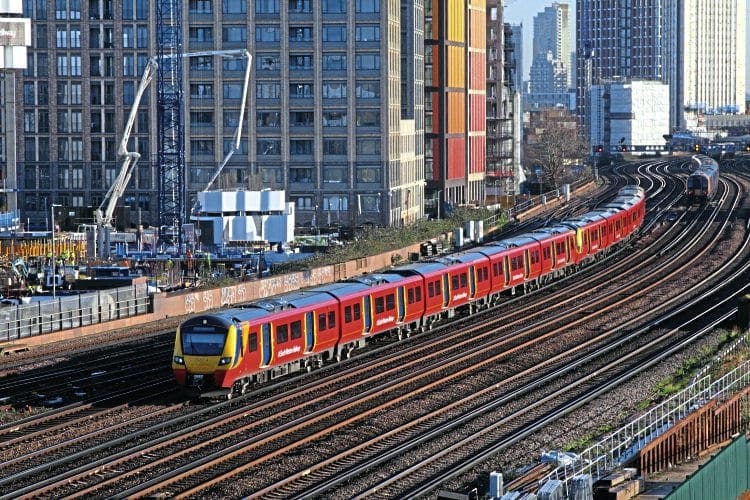
JAMIE SQUIBBS
Moving on
While many of the new trains being delivered are designed to increase capacity on key routes, others have been ordered to replace current trains, many of which date back to the BR era.
Since the earliest days of railways, trains displaced from front-line service have often been cascaded to less arduous or lower-profile duties – for example moving from London commuter lines to rural lines in northern England, the West Country or Scotland.
The huge number of new trains now being produced, coupled with the much more complex ownership arrangements of the privatised railway has resulted in an enormously convoluted programme of cascades, which will see hundreds of trains move to new operators.
Rolling Stock Owning Companies (ROSCOs), such as Porterbrook, Eversholt and Angel Trains, are keen to ensure continued use of these valuable assets, many of which have been given (or are scheduled to receive) expensive refurbishment programmes to make them meet new standards for mobility impaired passengers.
Despite their age, the InterCity 125s being displaced by IETs have had no problem finding new homes. GWR is retaining 11 modernised sets for regional services in the West Country.
Formed into shortened 2+4 sets with modernised Mk 3 trailers, modified with power-operated sliding doors, they will be based in Penzance and are expected to enter service from late-2018. GWR is retaining power cars Nos. 43005/024/040-042/092-094/097/098, 43122/153-155/158/170/172/186-189/192/194/198.
To improve its domestic InterCity services, Abellio ScotRail (ASR) is introducing 27 short-formed HST sets from May this year. Fifty-four overhauled ex-GWR power cars and 121 refurbished Mk 3 trailers with power-operated sliding doors and high-quality interiors will be formed into 17 2+4 and nine 2+5 sets to work between Edinburgh, Glasgow, Aberdeen and Inverness.
They will replace Class 170s, some of which are being cascaded to Arriva Northern, while others will allow trains to be lengthened on other routes in Scotland. ASR unit Nos. 170453-461/472-478 will move south between March and December.
Electrification has also allowed ASR to release eight Class 158s (158782/786/789/867-872) to Northern. The HST fleet will be phased into traffic between May and December (look out for a feature on this project in The RM soon).
GWR’s new bi-mode trains have also allowed the operator’s remaining Class 180 five-car DMUs to join their sisters at First Hull Trains and Grand Central. The latter replaced its own HSTs with Class 180s in December 2017 and the power cars and Mk 3s have moved to East Midlands Trains to create additional operational flexibility.
The longer-term future of the Hull Trains ‘180s’ is uncertain as the open access operator will introduce five Hitachi bi-mode Class 802s to replace them in 2019.
Discussions are taking place as to how EMT will replace its HST fleet after December 2019 because the leasing companies have no plans to make its Mk 3 fleet compliant with new accessibility regulations starting on January 1, 2020. Equally uncertain is the future of the East Coast HST and IC225 fleets, which will start to be replaced from December 2018.

Electrification in the Thames Valley is allowing GWR to move some of its Class 165/166 ‘Networker’ DMUs west to work around Bristol and Exeter. In turn, they are displacing Class 150s to Northern.
Eventually all 50 Class 150/1s will be united in the Northern fleet, including three released by London Northwestern (Nos. 150105/107/109) from the Bedford to Bletchley route and replaced by nine ex-Northern Class 153s.
The latter could be a short-term move as LNW is expected to order a small batch of two-car Class 230 ‘D-Trains’ from Vivarail. The ‘150’ fleet is steadily being refurbished and fitted with accessible toilets to keep it in traffic for the foreseeable future.
TransPennine Express (TPE) is transforming its fleet over the next couple of years and will release 23 of the 51 Class 185 ‘Desiro’ DMUs to further boost capacity at Northern. The ‘185s’ will work alongside new CAF DMUs on the new ‘Northern Connect’ network.

Also on the move are London Overground’s eight Class 172/0 DMUs. Once electrification of the Gospel Oak to Barking route in north London has been commissioned in the spring, Nos. 172001-008 will join their Class 172/1 cousins in the West Midlands.
Abellio’s new London Northwestern Railway (LNR) franchise will also receive all 10 four-car Class 350/4 EMUs (Nos. 350401-410) from TransPennine Express in 2019, boosting its ‘Desiro’ fleet ahead of the introduction of new Bombardier ‘Aventra’ sets.
The massive Class 700 EMU order has transformed the Thameslink operation over the last couple of years, displacing many Class 319s to Northern and allowing newer Class 377/387 ‘Electrostars’ to move to Southern and Southeastern. Many other Class 319s are now in secure storage at locations such as Long Marston in Warwickshire.
Porterbrook has commissioned Wabtec/Brush to modify some of its Class 319s as electro-diesel Class 769 ‘Flex’ trains, able to work away from the wires on routes such as Manchester to Windermere and in South Wales. Longer-term, some of Northern’s Class 319s will be replaced by CAF Class 331 EMUs on inter-urban routes in north-west England.
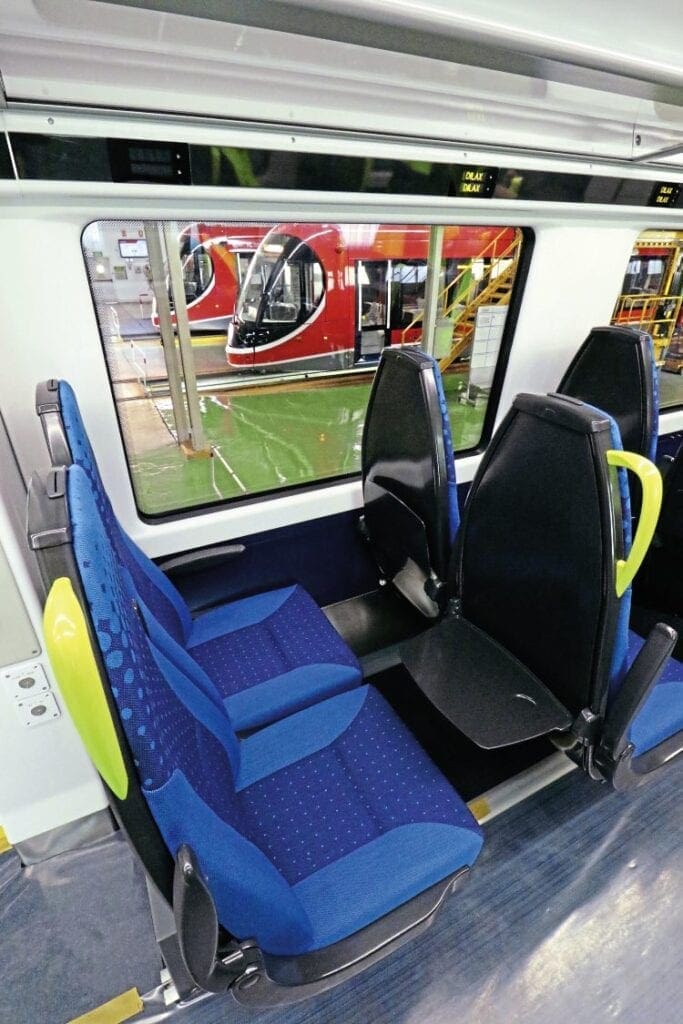
ScotRail has taken seven Class 321s from Greater Anglia and London Midland, reducing them to three cars to create additional Class 320s (Nos. 320411-417) for Strathclyde area suburban routes.
Five more will follow this year. One surprising, but very welcome, return is the modernisation and refurbishment of 18 Class 442 ‘Wessex Electric’ EMUs by South Western Railway (SWR).
The revamped trains are fitted with new Vossloh Kiepe traction packages to replace their second-hand (ex-‘4-REP’) English Electric equipment, and will be introduced on the Waterloo to Portsmouth route later this year. The other six ‘442s’ could also return to use, with new open access operator Alliance Rail on the Waterloo to Southampton route.
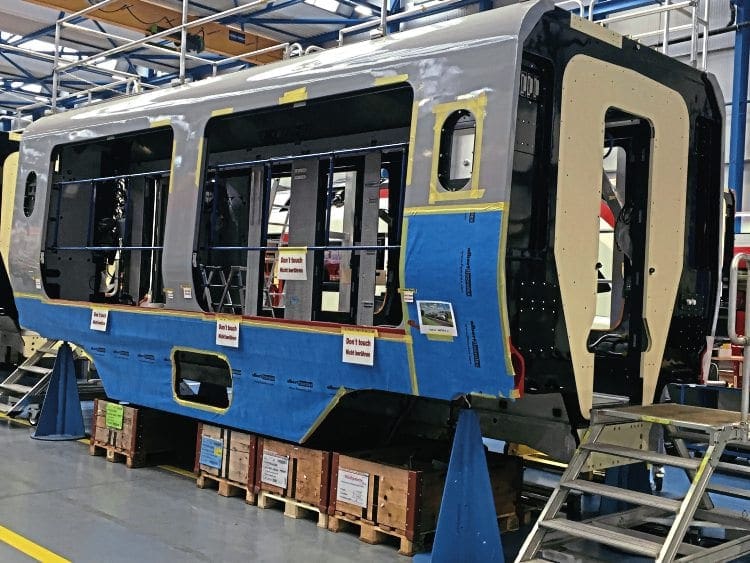
Uncertain future
It appears inevitable that many ex-BR EMUs will find themselves out of work by 2020 despite a great deal of time, effort and investment having been expended on making them suitable for continued use.
Plans to cascade them to other routes have been thrown into disarray by the cancellation of electrification schemes.
The early-1980s Class 317s used by Greater Anglia, Great Northern and London Overground are all under threat, as are their successors, the Class 321s built in 1988-90 for Network SouthEast.
Despite the ‘Renatus’ project, which involves the extensive refurbishment of 30 Class 321/3s with new interiors and seating, the original plan to rebuild the trains with modern AC traction equipment (No. 321303 was converted as a prototype) was superseded by GA’s decision to replace its entire fleet with new trains.
Northern’s Class 321s and 322s will also become surplus after new CAF EMUs are introduced in West Yorkshire.
An uncertain future also faces the early-1990s Hunslet-TPL Class 323 suburban units used in Greater Manchester and the West Midlands.
It was originally intended to bring the fleet together in Birmingham, once Northern’s Class 331s were delivered, but Abellio’s order for new metro-style ‘Aventras’ in late-2017 renders them redundant.
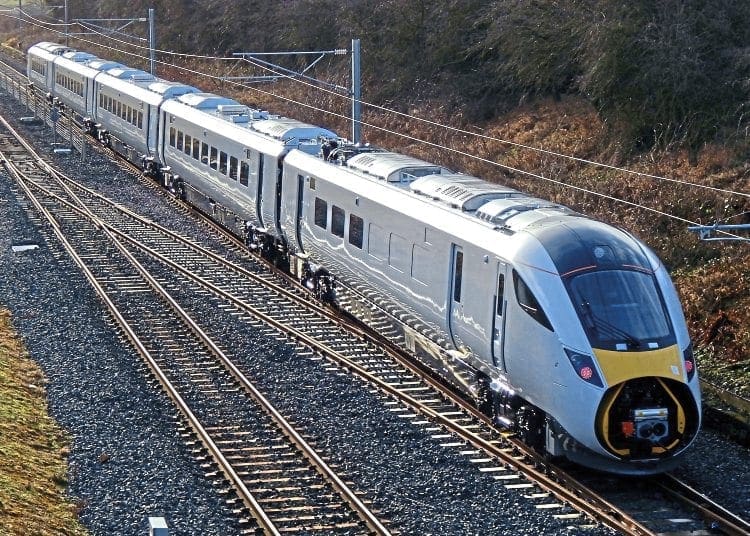
When a rolling programme of electrification was expected, it was thought the younger ex-BR EMUs would move to pastures new as more routes were wired. However, the curtailment of the GW Main Line programme, and cancellation of other schemes on the Midland Main Line, in South Wales and northern England have created a headache for the ROSCOs.
The recent trend towards massive new train orders, encouraged by low purchase and leasing costs, has also disrupted the traditional flow of cascades.
Great Northern’s 40 Class 365s were originally destined for the GWML, but 19 are now heading for storage as Class 387s and 700s take over. GN is retaining the 21 even-numbered sets.
Even relatively new trains such as Greater Anglia’s Class 360/1s (21 four-car sets) and the Heathrow Connect Class 360/2s (five five-car sets) will be replaced by newer trains in the next two years.
South Western Railway’s Bombardier Class 701s will replace ex-BR Class 455s (many recently fitted with new traction packages), 24 two-car Class 456s, 36 five-car Class 485s and even the 30 nearly-new Siemens Class 707s, which entered passenger service in December 2017.
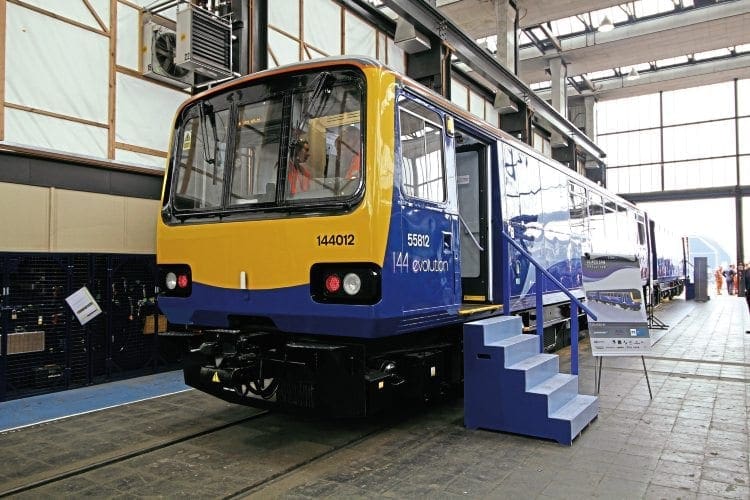
Some of these surplus trains will find new homes, but others are destined for storage and possibly the scrapyard.
Two other modern EMU fleets set to become surplus to requirements are London Northwestern’s Siemens Class 350/2s (Nos. 350231-267), which will be replaced by new Bombardier ‘Aventras’ in 2020/21, and Greater Anglia’s 30 four-car Class 379 ‘Electrostars’ – used on the Liverpool Street to Stansted/Cambridge route.
The latter will be ousted by Stadler ‘FLIRT UK’ and ‘Aventra’ EMUs in 2020. No new customers have yet been confirmed by the owners of these expensive and sophisticated modern trains.
Looking ahead to the next franchise renewals, bidders for the Southeastern contract are talking to train builders about new EMUs for commuter lines in south-east London and Kent, potentially putting the Class 376 inner-suburban EMUs and Class 465/466 ‘Networkers’ at risk in the early-2020s.
New and refurbished trains are also on the cards for the next Wales & Borders franchise, expected to be let later this year.

End of the line
The oldest EMUs still in regular use are the 1970s ‘PEP’ generation trains of Classes 313-315/507/508.
Great Northern’s Class 313s, dating from 1976, will be replaced by new Derby-built Class 717s in 2019, and ScotRail says its 14 Class 314 three-car sets will be retired by the end of this year.
By December 2019, Crossrail will be fully operational, releasing TfL Rail’s Class 315s, and their sisters working for London Overground will be replaced by new Class 710s after 40 years of loyal service on Liverpool Street inner-suburban duties.
Plans to cascade some of the ‘315s’ to South Wales to work the Cardiff Valleys lines would appear to have been scuppered by the Government’s recent cancellation of various electrification schemes.
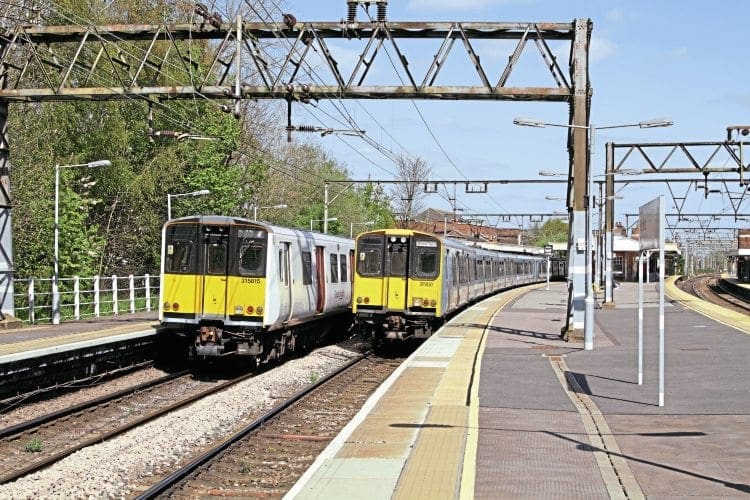
DR IAIN C SCOTCHMAN
From 2020, Merseyrail’s Class 507s and 508s will become surplus to requirements as the new Stadler EMUs enter service. That will leave a fleet of just 20 ex-GN Class 313s in use on Southern’s ‘Coastway’ routes from Brighton – but for how long?
Also on their way out are the Class 142-144 ‘Pacers’, employed by Northern, GWR and Arriva Trains Wales. The first Northern Class 142s are set to go off-lease later this year and will gradually disappear from the north of England as new and cascaded DMUs arrive to replace them.
Although Porterbrook had hoped to prolong the life of the ‘144s’ with its ‘Evolution’ concept, tested on No. 144012, they also appear to be destined for retirement. Could they follow the ‘141s’ abroad?
The future of ATW’s Class 142s and 143s will depend on the winner of the next Wales & Borders franchise, but they are top of the Welsh Government ‘hit list’ for replacement and should be withdrawn by the end of 2019.
Likewise, GWR’s Class 143s and five Class 153s will survive until they are replaced by cascaded Class 165/166s around Bristol and Exeter in 2019.
Finally, all but eight Eurostar Class 373s will be scrapped (several have already been disposed of) after the international operator introduced 17 new Siemens Class 374s for London-Paris/Brussels/Amsterdam services.
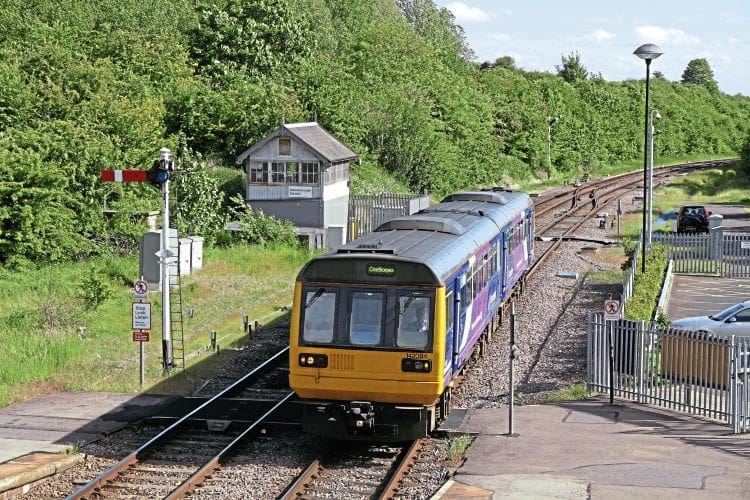
The trains were originally to have been retained to allow for expansion on routes such as London to Geneva, but these plans have been shelved in recent years.
The future
The train builders appear to have plenty to keep them occupied over the coming years, and many of the key orders are now in place, but competition is heating up for several other contracts on the horizon.
The expected Midland Main Line bi-mode order, which should be placed in 2019, was originally to have been for electric trains.
Beyond that, the biggest order on the horizon is the £2.75bn contract to supply trains for High Speed 2 (HS2). In October, five companies were shortlisted for this lucrative, but challenging, deal – Alstom, Bombardier, Hitachi, Siemens and Talgo – the latter bringing yet another new name to the UK market.
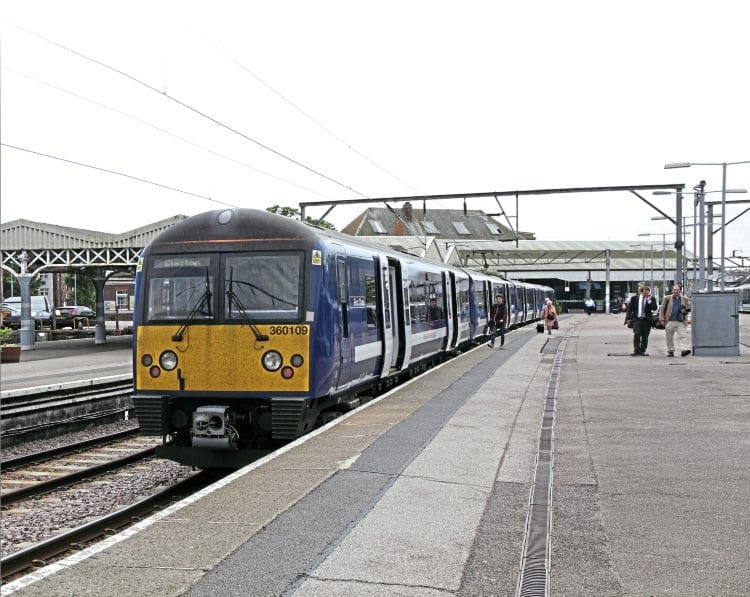
HS2 will choose the winner in 2019, with the first trains expected to start testing in the early-2020s and enter service on Phase 1 of the new high-speed railway in 2026.
These new trains will see the end of many familiar old ‘faces’, but they should also lead to an improvement in standards, more seats and a better service for passengers over the coming years.


